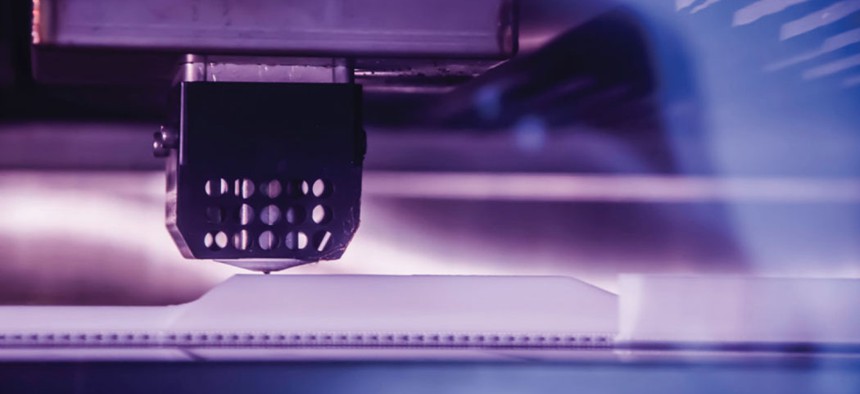DARPA seeks man-machine teaming to take manufacturing to the next level
The agency is looking for innovative mathematical solutions in manufacturing to leverage advances in new technologies such as additive manufacturing.
Pentagon researchers want to take advantage of new processes in 3D design and printing to revolutionize the way all kinds of materials are made. The Defense Advanced Research Projects Agency is planning a proposers’ day to inform potential partners of a forthcoming broad agency announcement involving human-machine teaming. The TRAnsformative DESign, or TRADES, program seeks to enhance the next generation of counterintuitive designs – smaller, yet stronger fabrics – through mathematical and algorithmic solutions.
Current designs are based on outdated platforms and thus do not leverage the advances that have been made in additive manufacturing and microfiber technologies, DARPA said.
“The structural and functional complexities introduced by today’s advanced materials and manufacturing methods have exceeded our capacity to simultaneously optimize all the variables involved,” said Jan Vandenbrande, DARPA program manager. “We have reached the fundamental limits of what our computer-aided design tools and processes can handle, and need revolutionary new tools that can take requirements from a human designer and propose radically new concepts, shapes and structures that would likely never be conceived by even our best design programs today, much less by a human alone.”
“For example, designing a structure whose components vary significantly in their physical or functional properties, such as a phased array radar, and an aircraft skin, is extremely complicated using available tools. Usually the relevant components are designed separately and then they are joined,” DARPA said. “Not accounting for these requirements during design can lead to production difficulties and defects, and in extreme cases require manual hand layup. Such problems could be mitigated or even eliminated if designers had the tools to account for the characteristics and manufacturing and processing requirements of the advanced materials.”
TRADES envisions a unified approach that can address design representation, analysis and synthesis. Final TRADES technologies will allow designers to navigate design space more easily and discover non-intuitive designs that leverage new materials and advanced manufacturing approaches, DARPA’s notice stated.
“Much of today’s design is really re-design based on useful but very old ideas,” Vandenbrande said. “The design for building aircraft fuselages today, for example, is based on a spar-and-rib concept that dates back to design ideas from four thousand years ago when ancient ships such as the Royal Barge of Khufu used this basic design concept for its hull. TRADES could revolutionize such well-worn designs.”
The proposers’ day is set for May 13.
NEXT STORY: Navy again rebrands carrier-based drone program




